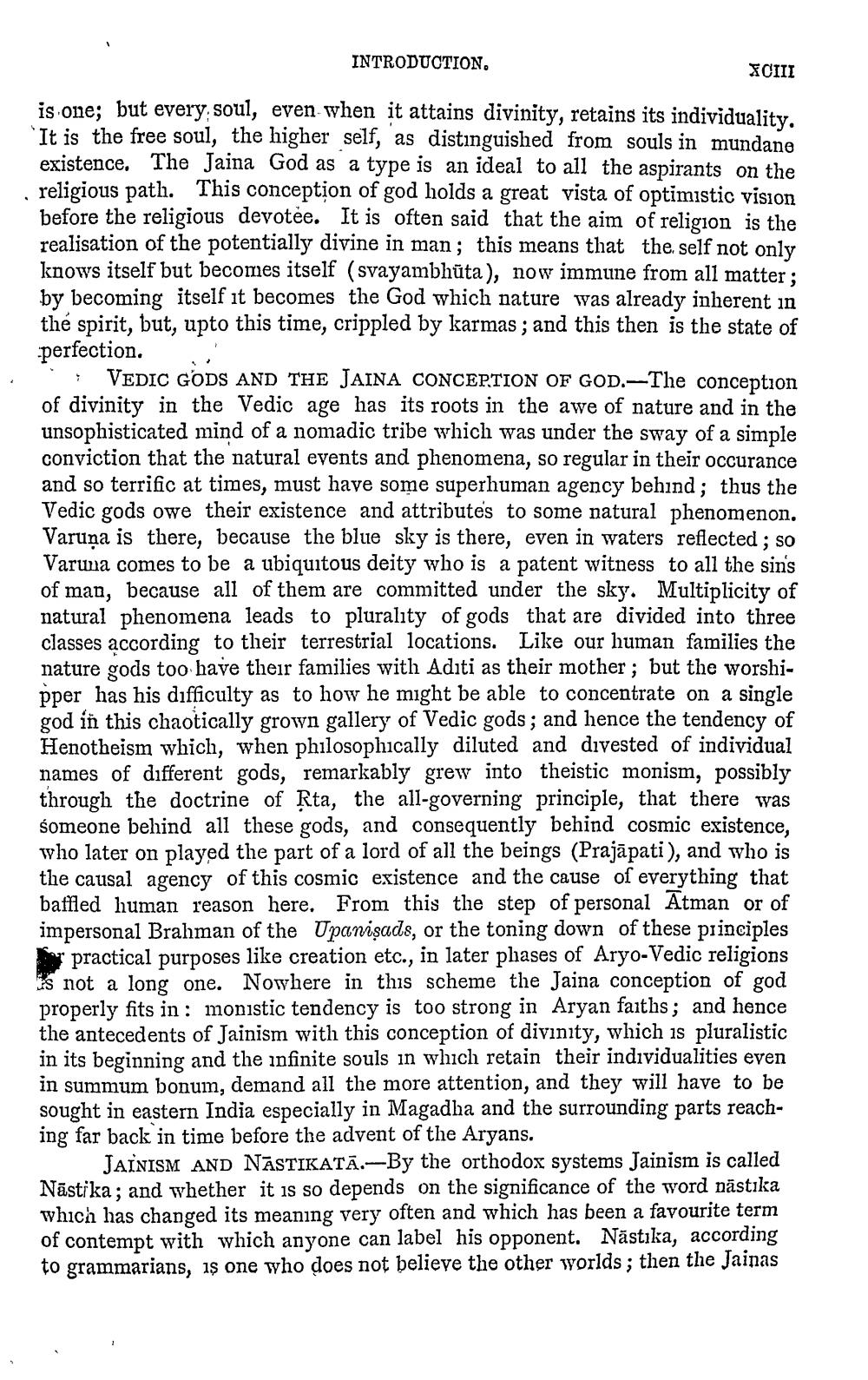________________
INTRODUCTION
XCIII
is one; but every soul, even when it attains divinity, retains its individuality. 'It is the free soul, the higher self, as distinguished from souls in mundane existence. The Jaina God as a type is an ideal to all the aspirants on the religious path. This conception of god holds a great vista of optimistic vision before the religious devotee. It is often said that the aim of religion is the realisation of the potentially divine in man; this means that the self not only knows itself but becomes itself (svayambhuta), now immune from all matter: by becoming itself it becomes the God which nature was already inherent in the spirit, but, upto this time, crippled by karmas; and this then is the state of perfection.
VEDIC GODS AND THE JAINA CONCEPTION OF GOD.-The conception of divinity in the Vedic age has its roots in the awe of nature and in the unsophisticated mind of a nomadic tribe which was under the sway of a simple conviction that the natural events and phenomena, so regular in their occurance and so terrific at times, must have some superhuman agency behind; thus the Vedic gods owe their existence and attributes to some natural phenomenon. Varuna is there, because the blue sky is there, even in waters reflected ; so Varuna comes to be a ubiquitous deity who is a patent witness to all the sin's of man, because all of them are committed under the sky. Multiplicity of natural phenomena leads to plurality of gods that are divided into three classes according to their terrestrial locations. Like our human families the nature gods too have their families with Aditi as their mother, but the worshipper has his difficulty as to how he might be able to concentrate on a single god in this chaotically grown gallery of Vedic gods; and hence the tendency of Henotheism which, when philosophically diluted and divested of individual names of different gods, remarkably grew into theistic monism, possibly through the doctrine of Rta, the all-governing principle, that there was someone behind all these gods, and consequently behind cosmic existence. who later on played the part of a lord of all the beings (Prajāpati), and who is the causal agency of this cosmic existence and the cause of everything that bafiled human reason here. From this the step of personal Atman or of impersonal Brahman of the Upanişads, or the toning down of these principles Dar practical purposes like creation etc., in later phases of Aryo-Vedic religions is not a long one. Nowhere in this scheme the Jaina conception of god properly fits in: monistic tendency is too strong in Aryan faiths; and hence the antecedents of Jainism with this conception of divinity, which is pluralistic in its beginning and the infinite souls in which retain their individualities even in summum bonum, demand all the more attention, and they will have to be sought in eastern India especially in Magadha and the surrounding parts reaching far back in time before the advent of the Aryans.
JAINISM AND NĀSTIKATĀ.--By the orthodox systems Jainism is called Nāstika; and whether it is so depends on the significance of the word nāstika which has changed its meaning very often and which has been a favourite term of contempt with which anyone can label his opponent. Năstika, according to grammarians, is one who does not believe the other worlds; then the Jainas




